The Top Functional Foods For Healthy Ovaries
April 5, 2019 By Sarah WhiteNo Comments

Nutrition is always a priority in my practice, but when it comes to preparing your body for pregnancy proper nutrition is more important than ever. A balanced nutrient-rich diet for the 3 – 6 months prior to making a baby will not only help to provide the right building blocks for your child, it will also help to set your body up for better recovery post-pregnancy. With the right ovary-supportive nutrients you’ll be more likely to conceive, less likely to develop issues during pregnancy, and possibly even have an easier time after giving birth. If you’re thinking of conceiving (even a few years down the line), now is the time to start thinking about your diet, lifestyle, and environment – as these will have an effect on your fertility and your baby’s health.
One of the most important things to consider when optimizing your diet to support ovary health are the mitochondria in your body. These are the power plants of the cell that turn the food you eat into energy in the form of ATP (adenosine triphosphate). Mitochondrial health and ovary health go hand in hand since the ovaries have the highest concentration of these energy producing cells in your entire body. More than your brain, heart and even your skeletal muscle! Healthy ovaries require a ton of mitochondria to function efficiently and to repair DNA damage. This is why most of the evidence-based supplements for improving fertility rates actually target and optimize mitochondrial function. Feeding your mitochondria a steady stream of nutrient-rich foods will give them the fuel they need to maintain healthy ovarian function, thereby improving your chances of getting pregnant.
A direct correlation exists between the number of mitochondria within the oocyte and its likelihood of fertilization and the following foods have been shown to support mitochondrial health within the ovaries:
Protein
Make sure you eat plenty of protein-rich foods that provide the amino acids required to protect your mitochondria. A minimum daily protein requirement for my patients looking to get pregnant is 60g / day, but you can calculate your optimal daily protein intake by multiplying your weight in kg x 0.8. Protein also provides a nutrient called carnitine, which helps to move fatty acids across the mitochondrial membrane where they can be used as a fuel source. The best protein sources for fertility include:
- Wild salmon: Eat wild caught organic salmon 1 – 2 times weekly as a great source of both protein and essential fatty acids. Make sure that you’re only eating wild caught fish at this critical time since heavy metals and toxins found in farmed salmon can be detrimental to the mitochondria in your ovaries.
- Oysters: Oysters are a great source of zinc and other key minerals important in the preconception period. They are also high in protein, low in calories, and loaded with other protective vitamins including vitamin B-12 and selenium. Taking your partner out for oysters once weekly (there are lots of wonderful buck-a-shuck nights in Oakville & Toronto) is a great way to enhance your fertility. Regular oyster consumption can also enhance arousal since they contain specific amino acids that trigger the production of sex hormones.
- Eggs: Eggs are absolutely one of the best foods to improve your ovary health because they contain a nutrient called Phosphatidylcholine, which is essential for a healthy pregnancy. Studies show that phosphatidylcholine requirements are increased during pregnancy and that adequate dietary intake is important to the brain development of you future baby. Free range eggs also contain essential fatty acids, protein (7g/egg), and so many other ovary-boosting nutrients. And don’t just eat the egg whites; the yolks provide around 0.52 mg mitochondrial supportive CoQ10 per serving.
- Organic Grass-fed Beef: Grass-fed beef is rich with protein and healthy fats. It also provides high amounts of essential vitamins B12, B1, B2, B6, folate, and biotin. Lean protein sources like organic chicken and turkey are also a great addition to your fertility diet but they don’t contain the same levels of nutrients and iron found in grass-fed beef. Beef is one of nature’s best sources of iron, which is important since iron deficiency can negatively impact mitochondrial function.
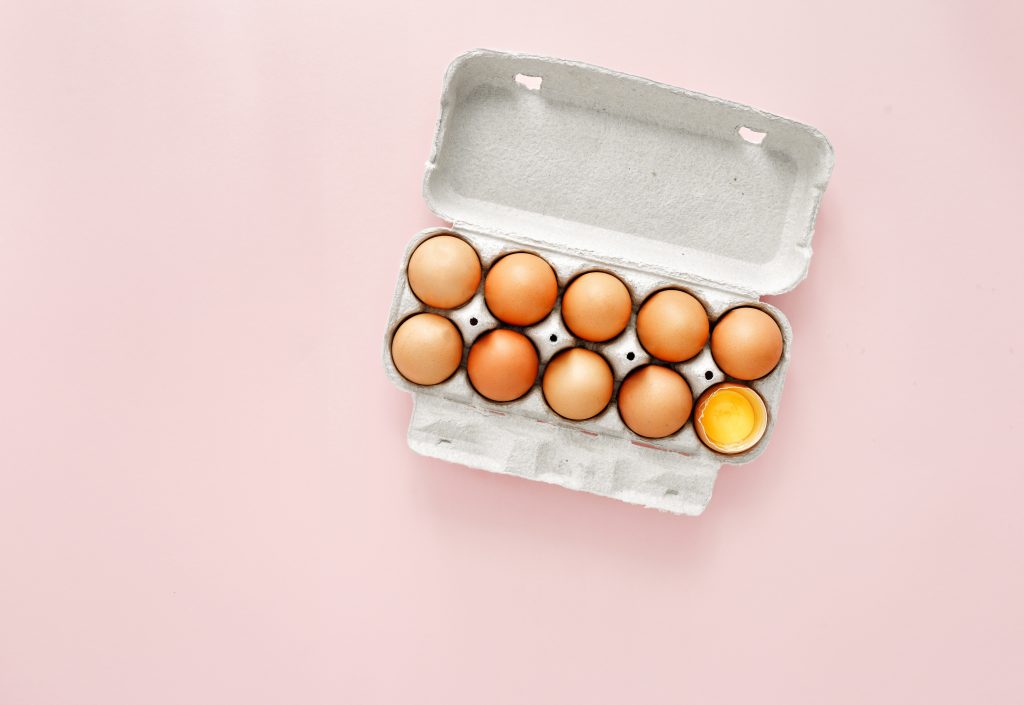
Healthy Fats
Fats are the ideal fuel for your mitochondria. Healthy fats also support ovarian health by providing anti-inflammatory support and improving the protective membranes surrounding your mitochondria. Eat 2 – 3 servings of the following foods daily to support your energy metabolism and ovary health:
- Walnuts: Walnuts are a wonderful source of polyunsaturated fats (PUFAs). They also contain iron, selenium, calcium, zinc, vitamin E and some B vitamins. Walnuts are an ideal snack for your partner as well since studies show that walnuts can improve sperm quality. ½ cup daily leads to improved motility, morphology and less oxidative damage.
- Almonds: My favourite fertility nut; almonds are high in potassium & calcium, both of which play a role in fertilization events for both sperm and egg cells.
- Sunflower seeds: Sunflower seeds are another great source of phosphatidylcholine for the healthy development of your future baby. Sprinkle 2 tbs on your salads or throw a handful into your daily smoothie.
- Extra virgin olive oil: 2 tbs of olive oil gives you a healthy dose of bioavailable mitochondrial-loving CoQ10. I love using olive oil for making salad dressings at home and for drizzling over roasted vegetables.
- Pumpkin seeds: Raw pumpkin seeds, aka pepitas, are a tasty mid-afternoon fertility snack. 1/4 cup of pumpkin seeds will provide approximately one quarter of your daily zinc requirements. Pumpkin seeds are also rich in magnesium, which is another key nutrient for mitochondria health.
- Avocado: As if we need an excuse to eat more avocado toast! Avocados are a wonderful source of healthy fats to fuel those mitochondria. I eat 1/3 – 1/2 an avocado every day with breakfast to meet my healthy fat requirements and keep me full all morning long.
- Sesame Seeds + Flax seeds: Not only are these seeds a great source of ovary-supportive fats, they are also part of my favourite hormone balancing dietary therapy; seed cycling. Flax seeds support healthy estrogen production in the first half of your cycle because they contain high levels of lignans – plant polyphenols that help to modulate estrogen levels. Sesame seeds should be eaten in the second half of your cycle since they are great food sources of zinc and vitamin E; two nutrients that have been shown to stimulate progesterone production and improve ovary health.
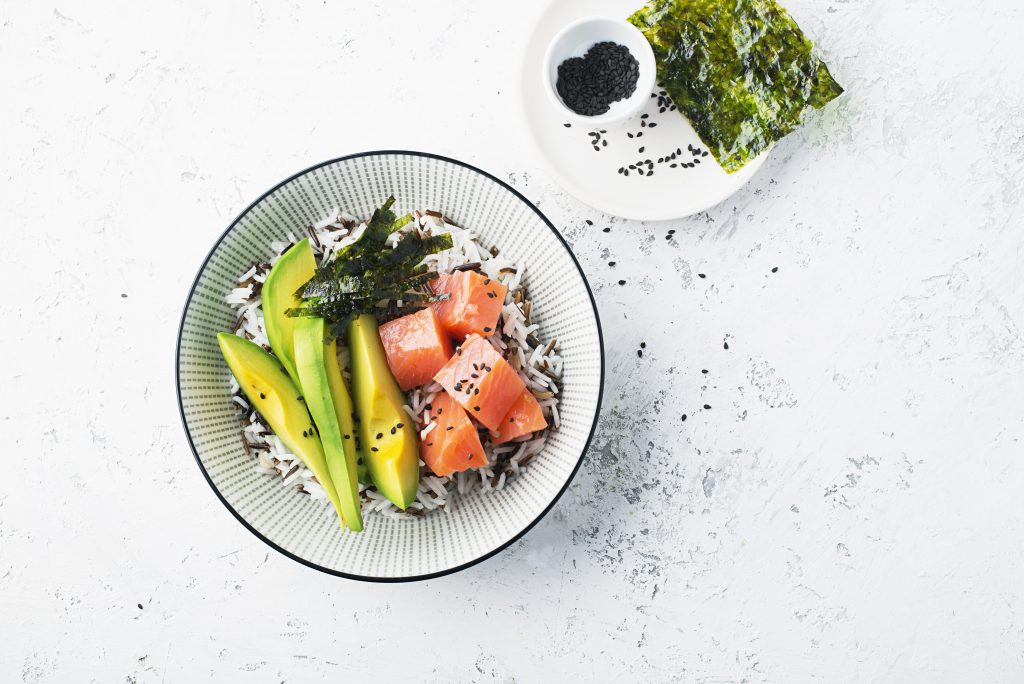
Antioxidants & Vitamins
There are two specific antioxidants that are especially beneficial when it comes to ovarian health; Alpha Lipoic Acid and Coenzyme Q10. These fertility powerhouses support energy production, protect your mitochondria and improve mitochondrial ‘biogenesis’. Biogenesis is the process of renewal and growth of mitochondrial cells, and the more mitochondria you have, the more you can support energy production in your ovaries. Here are the best food sources of ALA & Co-Q10:
- Liver: Liver is one of the most nutrient-dense foods on the planet, and a staple in the fertility diet. Just make sure you’re only eating organic sources since the liver is also an animal’s main detox organ, and can accumulate some nasty chemicals. Animal liver is especially high in B vitamins, but it also contains vitamin D, CoQ10 and iron – all of which can be particularly difficult to absorb from food. If you hate the taste of liver you can always take it in desiccated capsule form instead.
- Flax Seeds: Flax seeds are a great dietary source of ALA. They’re also rich in phyoestrogenic lignans; nutrients that are structurally similar to the hormone estrogen. Due to this similarity lignans can act as female hormone normalizers. This means that flax seeds can have either estrogenic or anti-estrogenic effects in the body depending on your own estrogen levels. Flax seeds also contain a good dose of omega 3 fatty acids and fibre, both of which contribute to healthy hormones via their impact on the good bacteria in your digestive system.
- Pumpkin Seeds and Pumpkin Seed Oil: Not only are pumpkin seeds a wonderful source of healthy fats and fertility supportive nutrients like zinc, they also contain a large amount of ALA. Aim to eat between 2 tbs and a 1/4 cup raw pumpkin seeds daily.
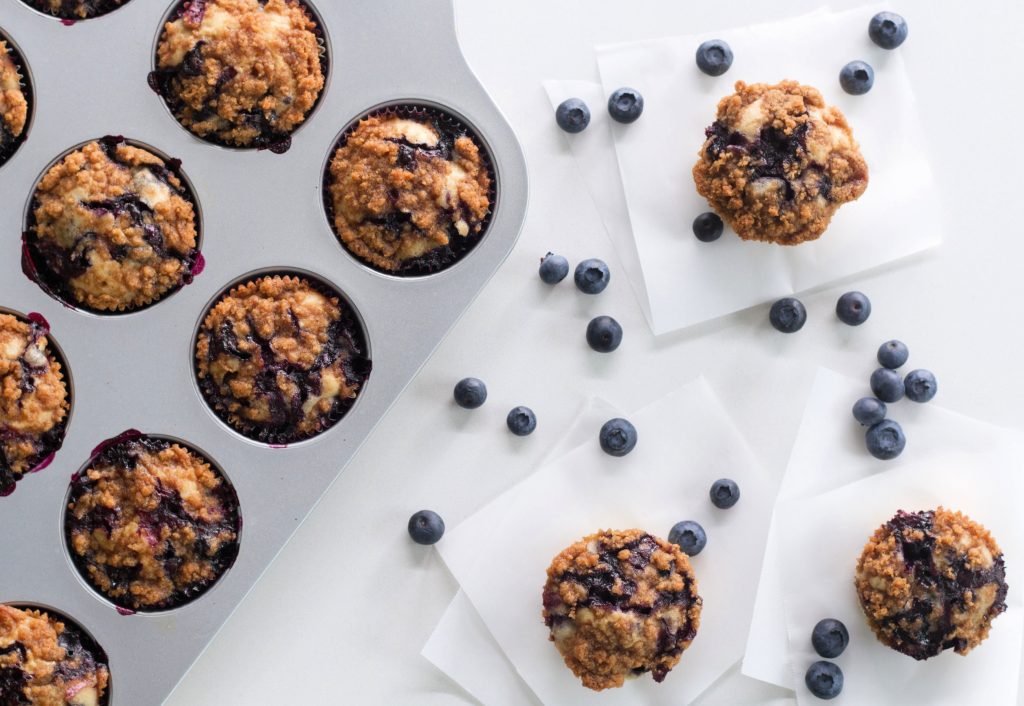
Glutathione Supportive Foods
Glutathione is the body’ main antioxidant and a must-have for healthy ovaries since it can improve egg quality and protects your mitochondria. Your ovarian follicles also require a generous dose of glutathione to produce stronger embryos. Deficiency in this antioxidant is related to premature ovarian aging and higher infertility rates. Load up on the following foods which can help you naturally produce more glutathione:
- Dark leafy greens: Leafy greens, especially spinach, contain high amounts of naturally occurring vitamin B6, B12 and Folate – some of the most critical nutrients in glutathione production.
- Sulfur-rich veggies: Onion, cauliflower, broccoli and cabbage all contain tons of sulfur, which has been shown to improve mitochondrial ATP production. They are also rich in a compound called sulforaphane. The sulforaphane found in these foods prevents inflammation in oocyte due to increased glutathione production. This study also shows that these sulfur-rich foods increase the barrier and defence system of your ovarian mitochondria.
- Brazil nuts: Selenium plays an important role in helping the body produce and recycle glutathione. The best food source of selenium comes from brazil nuts. They contain around 250mcg per 3 – 4 nut serving, which is as high of a dose as you’d get in a supplement.
- Turmeric: Curcumin is a naturally occurring flavonoid found in the spice turmeric. It has a long traditional use as an anti-inflammatory and antioxidant. Recently, scientists have also shown that curcumin can also increase the body’s glutathione levels and protect your mitochondria. Turmeric tastes amazing sprinkled over fried eggs or added to homemade soups and stews.
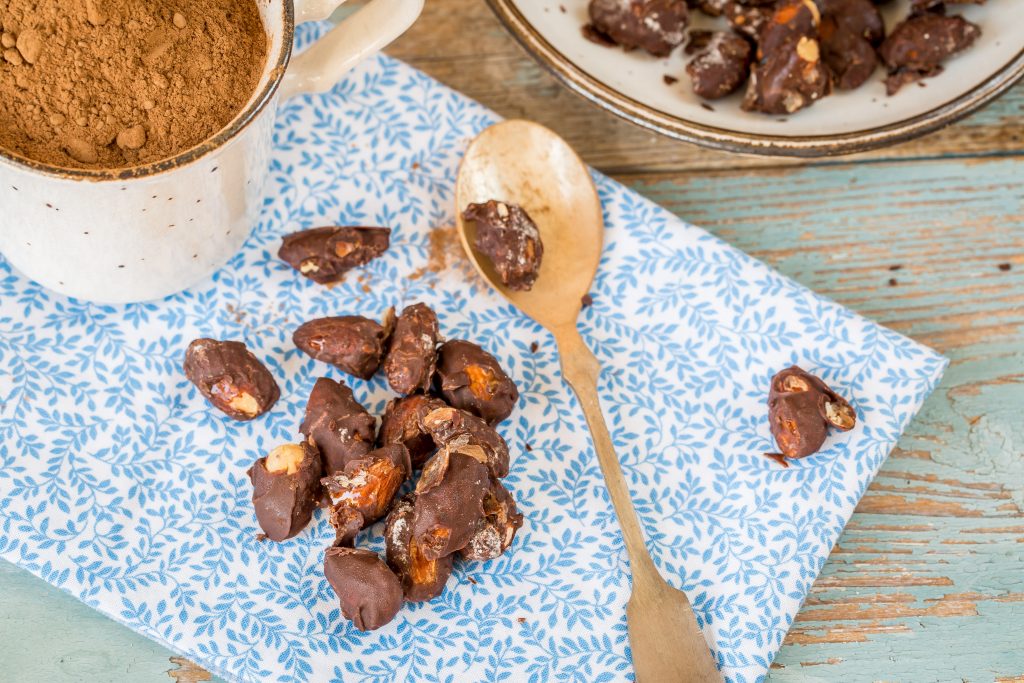
Non-starchy vegetables:
When trying to make a baby around 50% of your plate should be made up of non-starchy vegetables including broccoli, sea weed, zucchini, cauliflower, sprouts, greens (kale, chard, spinach, etc), onions and peppers. Add 1 healthy fat from + 1 organic protein and you’ve got the perfect fertility feast. These 3 vegetables are especially important when preparing for fertility:
- Kale: A bundle of fresh kale can support all your mitochondria needs. Kale provides sulfur to protect the mitochondria and improve glutathione levels, and it’s a great source or B vitamins. Two of my favourite ways to eat kale are raw leaves massages with olive oil, or lightly steamed kale drizzle with avocado oil, sea salt and lemon juice.
- Cabbage: Cabbage is filling, versatile and fabulous for your fertility. It’s a great source of those beautiful sulforaphane compounds that help prevent ovarian inflammation. As a bonus it can also help you detoxify environmental estrogens due to it’s high I3C content.
- Garlic. Garlic is another amazing antioxidant-rich and gut-healing superfood. Garlic contains a ton of sulfur for ovary health and has natural antimicrobial properties to keep you digestive system healthy. Not only is garlic a tasty addition to your diet, it also feeds the good bacteria in your gut. When the bacteria in your gut are healthy it can lead to balanced hormones and improved overall fertility.
- Note: Starchy veg like potatoes should be eaten in moderation – max 1 serving daily. They should be avoided all together in insulin-dependant hormonal conditions like PCOS.
Buy Organic:
Even healthy foods like broccoli and kale become unhealthy when they’re sprayed with a ton of pesticides. Research shows us that foods grown and produced with pesticides can be especially damaging to your mitochondria. I prefer that my patients eat only organic produce in the 3 months leading up their desired conception cycle to reduce overall toxin burden. While organic food can be more expensive I find it’s relatively comparable to conventional produce when purchased in-season. Buy organic, local produce to reduce exposure and always look for pasture-raised & grass-fed animal products.
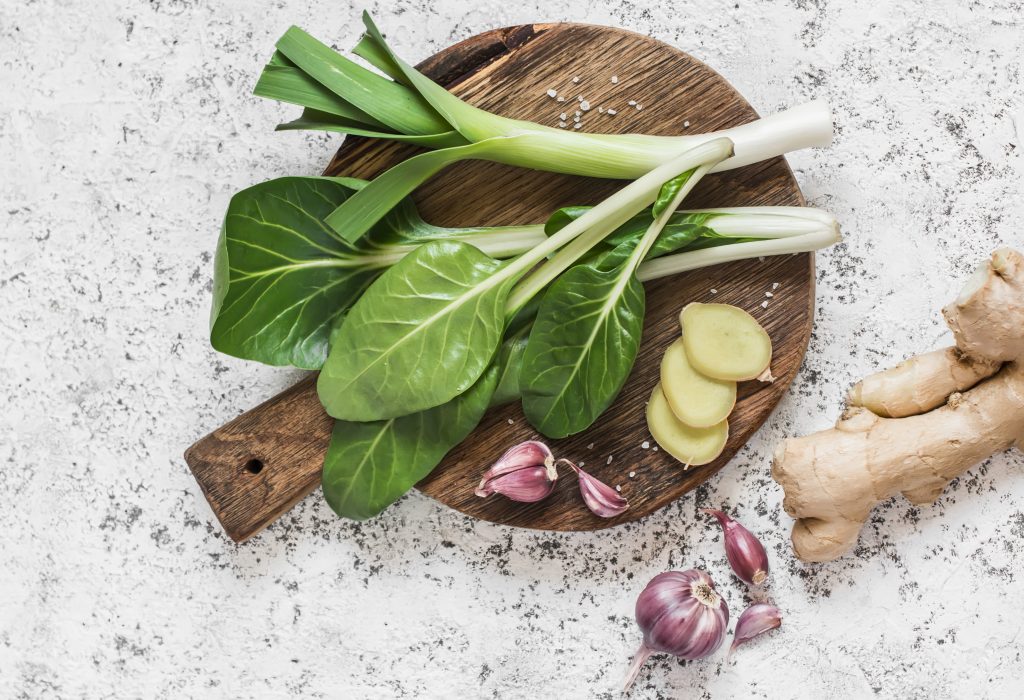
Intermittent Fast a Few Times Weekly:
It’s not only what you eat (or don’t eat) that can have positive effects on your ovaries. Food timing can also be important for optimal mitochondrial health. It’s believed that you can reduce mitochondrial free radical production by cutting your eating window down to only 8-hours daily. While this may sound extreme it’s actually quite easy. Instead of eating late at night have an earlier dinner and simply fast until the next day’s breakfast. Try intermittent fasting a few days a week to give your ovaries an extra mitochorndia boost!
If you have more questions about natural fertility support, or if you live in the GTA and would like to work with me to develop your personalized fertility protocol you can book your in-person visit here or visit my website for more information.
If you’d like to work together and you’re not a resident of Ontario*, or you’d prefer an online consultation you can book online with Dr. Sarah here.
*Note: online services provided by Dr. Sarah to those of you living outside of Ontario are delivered as a Certified Functional Medicine practitioner consult and not as an Naturopathic doctor appointment & as such they will not be eligible for reimbursement through private insurance.
References:
- https://www.ncbi.nlm.nih.gov/pubmed/27562289
- https://www.ncbi.nlm.nih.gov/pmc/articles/PMC5506767/
- https://www.rbmojournal.com/article/S1472-6483(18)30095-6/pdf
- https://www.ncbi.nlm.nih.gov/pubmed/21986339
- https://www.ncbi.nlm.nih.gov/pubmed/15650394
- https://www.ncbi.nlm.nih.gov/pmc/articles/PMC6078194/
- https://www.ncbi.nlm.nih.gov/pmc/articles/PMC3523162/
- https://www.ncbi.nlm.nih.gov/pmc/articles/PMC5989150/
This information is not intended as a substitute for the advice provided by your Naturopathic doctor or primary care physician. Do not use the information in this document for diagnosing or treating a health problem or disease. Always speak with your Naturopathic doctor before taking any medication or nutritional or herbal or using any treatment for a health problem. If you have or suspect that you have a medical problem, contact your health care provider promptly. Do not disregard professional medical advice or delay in seeking professional advice because of something you have read online.
COMMENTS
Leave a Reply
This site uses Akismet to reduce spam. Learn how your comment data is processed.
Mauren Meneses says
MAY 13, 2021 AT 8:15 AM
Hormonal issues and nutritional help
Reply